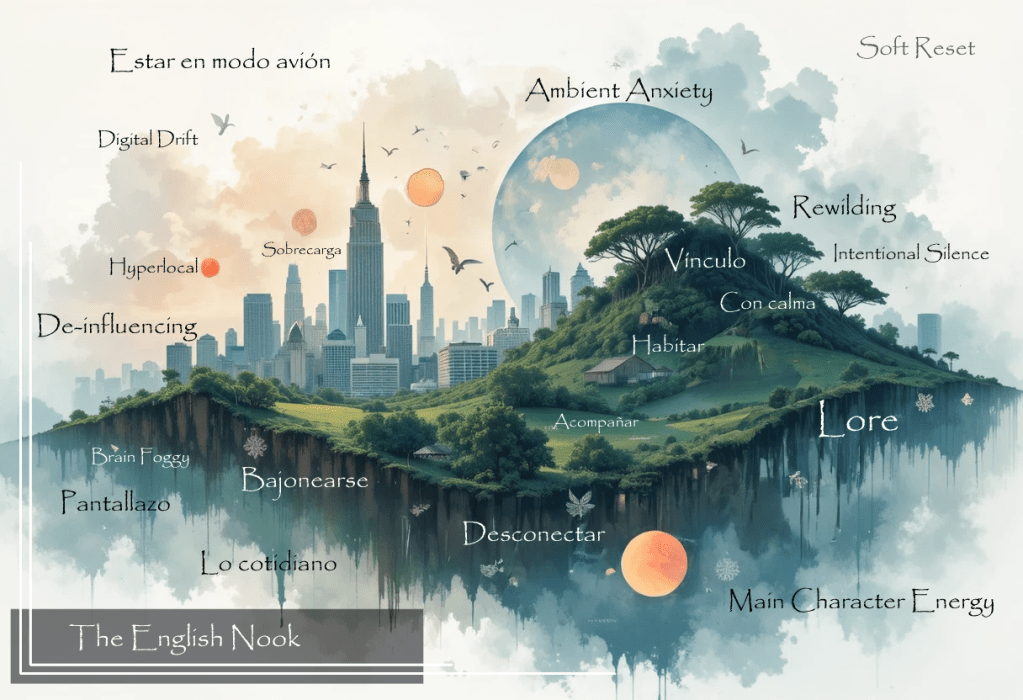The Evolution
In the annals of linguistic evolution, the origins of adjectives trace back to the dawn of human expression. As early societies sought to navigate their world, they crafted descriptors to distinguish between the mundane and the extraordinary. From the primal grunts of our ancestors to the eloquent prose of ancient civilizations, adjectives emerged as the bridge between thought and language, allowing individuals to capture the essence of their experiences.
The Spanish language, with its roots intertwined in the diverse cultures of the Iberian Peninsula, bears witness to a rich array of influences. From the Latin of the Roman conquerors to the Arabic of the Moors, each wave of civilization left its mark on the linguistic landscape, shaping the evolution of Spanish adjectives. Over centuries of cultural exchange and linguistic assimilation, adjectives in Spanish evolved, adapting to the rhythms of daily life and the whims of creative expression.
Yet, amidst this fluidity, Spanish adjectives exhibit a curious array of irregularities. From the unpredictable changes in form to the peculiar nuances of gender and number agreement, these irregularities add depth to the language while challenging learners to navigate the labyrinth of Spanish grammar with finesse. Whether grappling with the elusive comparative forms of “bueno” or unraveling the mysteries of irregular plurals, mastering Spanish adjectives requires a keen eye for detail and a willingness to embrace the complexities of language.
Join us on a journey through the corridors of history as we unravel the tapestry of Spanish adjectives, exploring their origins, evolution, and the fascinating irregularities that imbue the language with richness and depth.
From Roots to Quirks
Spanish adjectives play a crucial role in describing nouns by providing information about their characteristics, qualities, or attributes. They agree with the nouns they modify in gender (masculine or feminine) and number (singular or plural).
Here’s a breakdown of how they work and some common irregularities:
- Agreement in Gender and Number:
- Masculine singular: usually ends in -o (e.g., “alto” – tall)
- Feminine singular: often ends in -a (e.g., “alta” – tall)
- Masculine plural: add -os to the singular form (e.g., “altos” – tall)
- Feminine plural: add -as to the singular form (e.g., “altas” – tall)
- Positioning: Adjectives generally come after the noun they modify, though there are exceptions, particularly with certain adjectives denoting quality, such as “bueno” (good), “malo” (bad), etc.
- Common Irregularities:
- Some adjectives change in their feminine form:
- Masculine: “bueno” (good)
- Feminine: “buena” (good)
- Some adjectives have irregular comparative and superlative forms:
- “Bueno” (good): comparative “mejor” (better), superlative “el/la mejor” (the best)
- “Mal” (bad): comparative “peor” (worse), superlative “el/la peor” (the worst)
- Some adjectives have irregularities in both gender and number:
- “Joven” (young): masculine singular “joven,” feminine singular “joven,” masculine plural “jóvenes,” feminine plural “jóvenes”
- Adjectives ending in -e have the same form for both masculine and feminine:
- “Diferente” (different): masculine singular “diferente,” feminine singular “diferente,” masculine plural “diferentes,” feminine plural “diferentes”
- Some adjectives change in their feminine form:
Examples:
- Regular Adjective:
- “El perro negro” (The black dog)
- “La mesa pequeña” (The small table)
- “Los libros interesantes” (The interesting books)
- “Las chicas altas” (The tall girls)
- Irregular Adjective:
- “El buen hombre” (The good man), but, “La buena mujer” (The good woman)
- “Los mejores amigos” (The best friends)
- “Las mejores amigas” (The best friends, feminine)
- Adjective with Irregular Comparative/Superlative:
- “El día mejor” (The better day)
- “La peor película” (The worst movie)
- “El mejor restaurante” (The best restaurant)
- “La peor comida” (The worst food)
Remembering the gender and number agreements and irregularities can take some practice, but with exposure and practice, you’ll get the hang of it!
Threads of Time
Venturing into the depths of Spanish adjectives, we embark on a voyage through the annals of linguistic history. Latin, the cradle of Romance languages, bestows upon Spanish a rich tapestry of vocabulary. From “dulcis” (sweet) to “fortis” (strong), Latin roots like these echo through the ages, evolving into “dulce” and “fuerte” in Spanish, each syllable a testament to the enduring legacy of ancient Rome.
Yet, as we traverse the linguistic landscape, we encounter a kaleidoscope of influences that shape the Spanish we know today. Arabic, with its lyrical cadence and intricate semantics, leaves an indelible mark on Spanish adjectives. Words like “azul” (blue) and “almohada” (pillow) bear the unmistakable imprint of Moorish culture, a testament to centuries of coexistence and exchange on the Iberian Peninsula.
In this odyssey through language, we witness the convergence of cultures, where words become bridges spanning centuries of human experience. Latin, Arabic, and a myriad of other influences converge in Spanish adjectives, each one a testament to the resilience of language in the face of time.
As we draw near to the culmination of our expedition, let us stand in awe of the intricate mosaic of Spanish adjectives. Each word serves as a thread, weaving together the fabric of our shared past and connecting us to one another. In the ever-changing currents of linguistic evolution, we unearth not only echoes of history but also the timeless essence of human expression.
TAMBIÉN TE INTERESARÁ:








Leave a comment